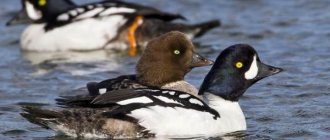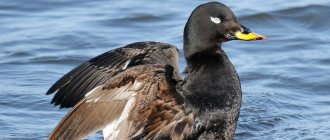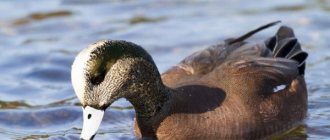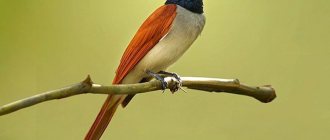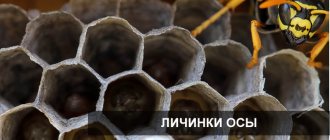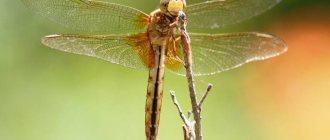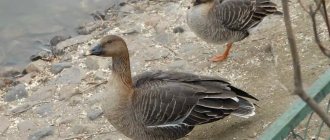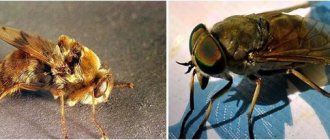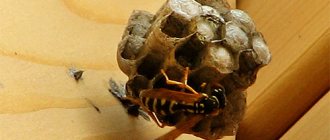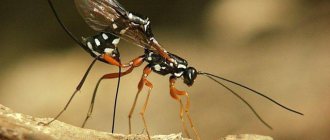The duck belongs to the group of diving ducks. They spend most of their time on the pond. They find their main food in lakes and rivers. Ducks dive well. They are completely immersed in water, reaching a depth of 6 m. They swim quickly under water. They rarely go ashore. The duck does not fly to fields with cereal plants, as other river ducks do.
Duck blacken
For their habitat, they choose reservoirs with dense vegetation. They hide from danger in reeds and reeds and build nests. Sometimes you can see a patch of dry vegetation moving through the water. There is a nest with a duck on it. What birds belong to the species of duck? What are their main characteristics?
About birds called tufted duck
The appearance of the bird is expressive: there is a plume of feathers on the head, a thin high neck, and a low landing in the water. The feather color is dark brown with a gray belly. The beak is long and elongated. The sea duck is similar to the mallard and teal.
The bird is distributed in the arctic and subarctic latitudes of Eurasia. The most common duck found in Russia and Belarus is the black duck, a photo of which adorns the stands of hunting clubs. The species is a commercial species and is actively hunted in the spring and autumn.
Crested duck
INTERESTING FACTS, INFORMATION…
- The wings of the Tufted Duck make a whistling sound during flight.
- Flocks of Tufted Ducks can number more than 1,000 ducks.
- Black ducks readily nest in gull colonies.
- The wings of ducklings are well adapted for diving. They are relatively short and sharp, making it difficult for birds to stay in the air on them. The duck must make a long acceleration, and it can only gain speed by quickly flapping its wings.
- During the mating dance, the yellow color of the drake's eyes becomes even more expressive.
- The duck has been nesting in the center of Europe since the end of the 18th century.
What is the difference between a male and a female?
The male has a black head, neck and chest, white sides and belly. During the mating season, the northern duck is covered with feathers with a green tint on its head. A diving bird enters the surface at an angle of 45°.
The female is dark brown in color, the sides are slightly lighter than the rest of the body. There is a white spot at the base of the beak. A white stripe stretches from the base of the beak to the ear area. The weight of the female reaches up to 950 g, in the male it ranges from 750-1200 g.
Black Crested in flight
REPRODUCTION
The duck nests annually with a new partner. “Matchmaking” begins in winter and continues until spring. It happens that some birds pair up even before flying to their nesting sites.
The ducks perform the mating dance together, while the drake makes quiet whistles. The male bends his neck towards the female, and together they, with their beaks outstretched, rhythmically shake their heads up and down. After mating, the drake swims around the duck. A place for a nest is found already in March-April, but eggs are laid only in May. The nest is located on an island in the reeds. Tufted ducks often nest in areas near large gull colonies. Seagulls are very attentive and scream to warn of the appearance of an enemy. The female begins incubation after laying the last egg. She alone, without the help of a male, warms the eggs with her warmth and takes care of the chicks.
What do nests look like and where do they nest?
The structure of the nest depends on the type of ducks that blacken. The sea duck builds a depression in the bud, which is lined with down. Tufted duck prefers reed and coastal areas. She also looks for depressions or digs them out with her paws. The materials used to build a bird's nest are dry grass and small reed stems.
The clutch consists of 6-11 large oval eggs. The shell has a light brown tint, closer to the gray spectrum. The sea duck's egg surface hue is closer to olive color. The bird lays eggs in late May early June. Hatching time is up to 28 days.
Habitat
The Tufted Duck is a waterfowl and diving bird. Such ducks settle near lakes, rivers, ponds, and artificial reservoirs with fresh water. Avoid swamps and river floodplains. This migratory bird winters in warm regions. In spring it flies to various regions of the temperate zone of Eurasia. Numerous flocks of ducks have been spotted in Belarus, Ukraine and Russia.
Birds settle in different types of water bodies, but prefer fishery ponds where black-headed gulls live. Ducks choose deep lakes and reservoirs with an abundance of fish, insects, and surface and coastal vegetation.
See also
Is raising ducks as a business profitable or not, the profitability of farmingRead
Where does the tufted duck live?
The duck duck is widespread in areas with a distinct temperate climate. Prefers to settle on the border of a watershed with abundant vegetation along the banks.
Bird habitat:
- North of Russia;
- coast of France;
- in Finland;
- in the Aleutian Islands, Gotland;
- in the south of Great Britain;
- in South Florida;
- on the Atlantic coast.
Duck blacken
Distribution of Australian scaup.
The Australian duck is endemic to southwest (Murray-Darling Basin) eastern Australia and Tasmania. Some isolated populations of ducks live on the coast of Vanuatu. Probably breeds in East Timor.
Conservation status of the Australian scaup.
Australian ducks are not experiencing any major threats to their numbers. Although there has been a decline in duck numbers in the twentieth century, since the turn of the century the most significant threats have disappeared and numbers remain stable at between 200,000 and 700,000 individuals. The highest concentrations of Australian ducks are around lakes in west and central Queensland. In Australia, the most important duck concentration areas are around lakes during periods of drought. Mandora Swamp in South Australia is also a gathering place for ducks when there is no rain. The number of birds in Tasmania is also stable. Outside of Australia in New Zealand and New Guinea, the distribution of the Australian duck is very sparse. There is a threat of habitat change due to drainage of wetlands in the breeding areas of the Australian duck.
If you find an error, please select a piece of text and press Ctrl+Enter.
Types of crested ducks and their differences
Breeds of wild ducks are divided by habitat and appearance. The sea duck looks more like a mallard. The plume consists of a narrow strip running along the head. The Tufted Duck is distinguished by its most luxuriant hair. Her voice is strong up to 529Kb and can be heard far away. The northern duck subspecies has a short neck, a dense body and a greenish tint of feathers on the head. The male has white sides.
general description
When looking at photos of tufted ducks, it becomes clear that all varieties have some similar features:
- Dimensions and weight . The body weight of corydalis rarely exceeds 3 kg, and there are no large birds among them.
- Body type . According to the description, all tufted ducks have a small but well-built body with a wide back and a well-developed chest. The neck is short, legs are of medium length.
- The feather cover is hard and dense . The color can be different and depends on the type of bird. Corydalis with dark plumage always have a richly colored beak.
Duck crested hunting species
The Tufted Duck is listed in the Red Book section of the wild ducks of Russia; a photo of the bird adorns the emblem of the annual conference of ecologists. This subspecies is considered rare and requires protection. The remaining species of ducks are considered to be game species. However, the number of shooting for scaup is strictly regulated. The number of shooting permits is adjusted every year.
Distribution[edit | edit code]
Area[edit | edit code]
The sea duck is the most northern species of the genus of sea ducks, nesting in the subarctic and arctic latitudes of Eurasia and North America. In Scandinavia it rises to approximately the 70th parallel, being absent only in the northernmost part of the peninsula. In the Russian north it is found west of the Urals to the coast of the Arctic Ocean, in Yamal up to 70° N. sh., on the Gydan Peninsula up to 71° N. sh., on Taimyr up to 74° N. sh., east to the mouth of the Kolyma and the southern foot of the Anadyr Range to 71° N. w. On the American continent it nests in Alaska to Kotzebue Bay, east to the sea coast. The southern border of the nesting range covers the forest-tundra and the northern border of the taiga. Outside the continents, it lives in Iceland, on the Åland, Komandorsky, Kuril, Aleutian Islands, on Sakhalin, the islands of Öland and Gotland.[8][9]
Habitats[edit | edit code]
During the breeding season, it inhabits the shrub tundra, forest-tundra and northern taiga, where it is found on various flowing bodies of water with overgrown banks, from small shallow swamps and rivers to large lakes. In Scandinavia it nests along a narrow birch belt.[3] Often found in the company of other northern ducks - tufted duck, black duck ( Melanitta nigra
), scoter[10], long-tailed duck, and in America, the lesser tufted duck.[11] Foraging biotope - reservoirs rich in mollusks and vegetation with a depth of no more than 6 m.[2]
Migration[edit | edit code]
Mainly a migratory bird, it winters on the sea coasts of temperate latitudes, including the Black, Azov and Caspian Seas, off southern Sakhalin.[4] During autumn migration, flocks of males and females split up - as a rule, drakes choose more northern latitudes.[2] Small sedentary populations are noted along the southern coast of Alaska and in southwestern Iceland. In winter, it stays at sea close to the coast, where the depth does not exceed 10 m, preferring narrow bays, lagoons and estuaries. Often found near wastewater outlets.[2] Sometimes it flies into river mouths and nearby freshwater lakes. Rarely found in inland waters far from coasts.[4] Young birds that have not reached sexual maturity often remain in wintering areas throughout the summer.
Breeding birds at home
The black duck takes root well at home. Birds can be raised in captivity, provided that appropriate conditions are created. Blacklings love water; the farm should have a pond up to 1.5 m deep.
The banks of reservoirs should be covered with pebbles and gravel. This is necessary to build a bird's nest. It is desirable that the territory have bushes or reed thickets along the banks of the reservoir. This is a necessary condition for the bird to rest.
The bird is demanding on nutrition. Its diet should contain food of animal origin: earthworms, small fish, snails, mussels, macomas, heartworms, hydrobia. As additives, corn and wheat are also worth adding green feed. Ducks are migratory, so the aviary with ducks must have a mesh roof.
Listen to the bird's voice
The audio tag is not supported by your browser. Close
Feeding of the Australian duck.
Australian ducks feed mainly on plant matter. They eat seeds, flowers and other parts of plants, sedges and semi-aquatic grasses. Ducks also consume invertebrates, mollusks, crustaceans, and insects. They catch small fish. In the state of Victoria in the south-east of the Australian continent, Australian ducks spend 15% of their time foraging and about 43% resting. Most of the prey, 95%, is obtained by diving and only 5% of food is collected on the surface of the water.
Reproduction and nesting of the Australian duck.
The breeding season is tied to the rainy season. It typically falls between October and December in the south-east, and September and December in New South Wales. Ducks form permanent pairs. However, sometimes couples last only one season and then break up, and polygamy is also observed.
Australian ducks nest in isolation in marshes covered with reeds and sedges.
The nest is located on the shore of a pond or on an island, well hidden in dense vegetation. It is built from aquatic or semi-aquatic plants. It looks like a covered platform lined with down.
The clutch contains 9 - 13 white-cream eggs. In some cases, a nest contains up to 18 eggs, which are the result of nest parasitism and laid by other ducks. The eggs are large, on average 5 - 6 cm and weigh about 50 grams. Only the female incubates the clutch for 25 to 27 days. The chicks emerge covered with light down, dark brown on top and yellowish below, with a variegated tone in front of the body. They grow quickly, gaining weight from 21 to 40 grams. Adult ducks maintain their brood for an indefinite period of time. There are no statistics on the longevity of adult ducks.
Features of diving ducks
In order to follow their destiny - to dive easily and deeply for prey, nature “gave” swimming membranes to diving ducks. And, unlike ordinary birds, the white-sided and white-sided birds have a “blade” on their finger for fast movement under water. Birds go to depths of up to 10 m and can remain under water for almost a minute. The diving duck has rather short wings - it is more difficult for it to fly, but they do not interfere with its ability to swim quickly under water. A stump tail is also used for the same purposes.
Dives do not part with their favorite element, water, even when shot. The survival instinct encourages them to move away from the shore, hiding under the river or sea water surface.
The tufted duck, like the sea duck, is an attractive object for sport and photo hunting. Although the meat does not have an excellent taste, it tastes like fish, but the very fact of catching a dexterous, agile bird is of interest.
Food[edit | edit code]
The diet is mixed and consists of approximately equal parts plant and animal feed. An important role, especially in winter, is played by shellfish - mussels, macomas ( Macoma
), heartweed (
Cardium
), hydrobia (
Hydrobia
)[2], shutter (
Valvata
), pearl barley (
Unio
), toothless (
Anodonta
), etc.[4] In addition, it feeds on crustaceans, larvae of aquatic insects, small fish, earthworms, as well as vegetative parts (rhizomes, leaves and seeds) of aquatic plants.
Notes[edit | edit code]
- ↑ Boehme R.L., Flint V.E.
Five-language dictionary of animal names. Birds. Latin, Russian, English, German, French / Under general. ed. acad. V. E. Sokolova. - M.: Russian language, RUSSO, 1994. - P. 32. - 2030 copies. — ISBN 5-200-00643-0. - ↑ 1 2 3 4 5 6
Greater Scaup (English).
BirdLife Species Factsheet
. BirdLife International. Access date: October 21, 2008. Archived March 20, 2012. - ↑ 1 2 3 4 5 6 John Gooders, Trevor Boyer.
Ducks of Britain and the Northern Hemisphere. - London: Collins & Brown, 1997. - pp. 102-105. — 176 p. — ISBN 1855855704. - ↑ 1 2 3 4 5 6 7 G. Dementyev, N. Gladkov.
Birds of the Soviet Union. - Soviet Science, 1953. - T. 4. - P. 507-513. - ↑ Sea sage – Aythya marila (undefined)
. Website “Waterfowl and gulls of the Moscow region”. Access date: October 20, 2008. - ↑ R. L. Boehme, V. L. Dinets, V. E. Flint, A. E. Cherenkov.
Birds. Encyclopedia of Russian nature. - Moscow: ABF, 1997. - 430 p. — ISBN 5-87484-045-1. - ↑ Killian Mullarney, Lars Svensson, Dan Zetterström, & Peter J. Grant.
Birds of Europe = Birds of Europe. - Paperback. - United States: Princeton University Press, 2000. - P. 56. - 400 p. — ISBN 978-0-691-05054-6. - ↑ L. S. Stepanyan.
Abstract of the ornithological fauna of Russia and adjacent territories. - Moscow: Akademkniga, 2003. - 808 p. — ISBN 5-94628-093-7. - ↑ E. A. Nazarenko, S. A. Bessonov.
Aythya marila (Linnaeus, 1761) – Sea duck
(undefined)
.
Vertebrates of Russia: a review
. Institute of the Russian Academy of Sciences named after. A. N. Severtsova. Access date: October 20, 2008. - ↑ A.V. Kretschmar.
Biology of birds. Birds of Western Taimyr. - M.; L.: Publishing House of the USSR Academy of Sciences, 1966. - P. 185-312. - ↑ Michael A. Fournier, James E. Hines.
Breeding Ecology of Sympatric Greater and Lesser. Scaup (Aythya marila and Aythya affinis) in the Subarctic Northwest Territories // Arctic. - 2001. - T. 54, No. 4. - P. 444-456. - ↑ Paul Ehrlich, David S. Dobkin, Darryl Wheye.
The Birder's Handbook: A Field Guide to the Natural History of North American Birds. - New York: Fireside, 1988. - 785 p. — ISBN 0671659898.

